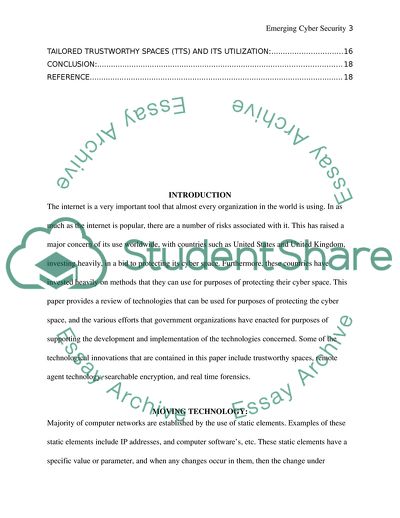Cite this document
(Emerging Cyber Security Approaches and Technologies Research Paper Example | Topics and Well Written Essays - 4500 words, n.d.)
Emerging Cyber Security Approaches and Technologies Research Paper Example | Topics and Well Written Essays - 4500 words. https://studentshare.org/information-technology/1878802-emerging-cyber-security-approaches-and-technologies
Emerging Cyber Security Approaches and Technologies Research Paper Example | Topics and Well Written Essays - 4500 words. https://studentshare.org/information-technology/1878802-emerging-cyber-security-approaches-and-technologies
(Emerging Cyber Security Approaches and Technologies Research Paper Example | Topics and Well Written Essays - 4500 Words)
Emerging Cyber Security Approaches and Technologies Research Paper Example | Topics and Well Written Essays - 4500 Words. https://studentshare.org/information-technology/1878802-emerging-cyber-security-approaches-and-technologies.
Emerging Cyber Security Approaches and Technologies Research Paper Example | Topics and Well Written Essays - 4500 Words. https://studentshare.org/information-technology/1878802-emerging-cyber-security-approaches-and-technologies.
“Emerging Cyber Security Approaches and Technologies Research Paper Example | Topics and Well Written Essays - 4500 Words”. https://studentshare.org/information-technology/1878802-emerging-cyber-security-approaches-and-technologies.


